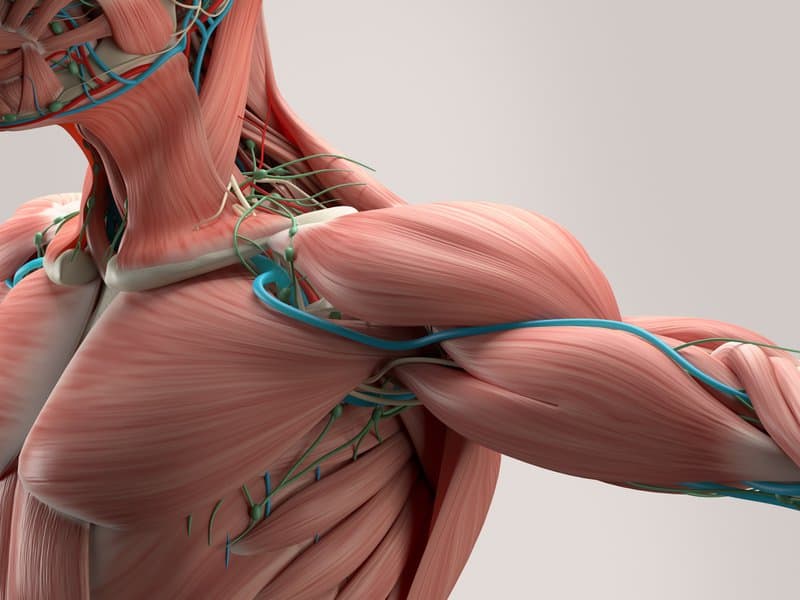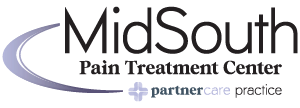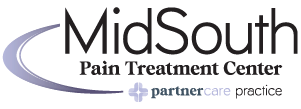Stim therapy or electrical stimulation therapy (e-stim) is commonly used in physical therapy offices as a way to increase the range of motion, strength, endurance, and overall performance for patients with musculoskeletal injuries.
It’s also been shown that stim therapy may be effective at treating chronic pain conditions such as fibromyalgia, osteoarthritis, carpal tunnel syndrome, low back pain, neck pain, tennis elbow, plantar fasciitis, Achilles tendonitis, knee arthritis, hip joint problems, shoulder impingement, frozen shoulders, rotator cuff tears, bursitis, tendinosis, trigger finger, carpal tunnel syndrome, tarsal tunnel syndrome, and other soft tissue disorders.
in this article, we will introduce the different types of stim therapy and discuss the top 10 benefits of using stim therapy.
Types of Stim Therapy
There are many different types of stim therapy devices available on the market today including:
1.) E-stim machines – These are typically large units that have multiple electrodes attached to various parts of the body. The machine sends an electric current through these electrodes causing muscles to contract and relax. This type of device has been proven to work well for people who need to strengthen their core muscles. It works best when combined with exercise programs designed specifically for each individual patient.
2.) Hand-held stimulators – These smaller hand-held devices use two small pads connected by wires which send pulses of electricity into the skin. They are often used to treat acute injury situations where there is no time delay between treatment sessions.
3.) TENS unit – A Transcutaneous Electrical Nerve Stimulator (TENS
This is one of the most common forms of electrical stimulation therapy. It uses surface electrodes placed over painful areas of the body to block nerve impulses from reaching those tissues. When this occurs, the brain receives less information about the area being stimulated so the sensation becomes dulled. In addition, the nerves themselves become desensitized to incoming signals. As a result, they don’t transmit pain messages to the spinal cord.
4.) Ultrasonic wave generators -These devices produce high-frequency sound waves that stimulate deep tissue structures below the skin’s surface. Some studies suggest ultrasound may be more beneficial than traditional massage techniques because it stimulates deeper layers of connective tissue. However, some research suggests that ultrasound might not provide any additional benefit compared to standard manual therapies.
5.) Magnetic field stimulators – Magnetic fields are generated using coils wrapped around specific points on the body. Studies show magnetic fields may reduce inflammation and promote healing after surgery. There is limited evidence suggesting that magnetic fields could be useful for reducing pain associated with certain kinds of headaches.
1. Relieving Back Spasms
Back spasms are notoriously uncomfortable. The sharp pain associated with spasms can be so intense that people are often unable to sleep, sit down or stand upright.
Stimulation devices have been used in physical therapy offices for decades to help patients get relief from back spasms by sending electric currents through electrodes placed on specific areas of the low back. The electric charges cause the muscles to contract and relax.
Electrical stimulation is often the first line of defense against back spasms. e-stim units designed for treating back pain can be worn on your belt or placed in your pocket, freeing you up to go about your normal daily activities (even though you should avoid strenuous activity).
Believe it or not, wearing a TENS unit has been shown to lower the amount of pain medication you need during a spasm, and that means a higher level of comfort.
2. Strengthening of Weakened Muscles
Muscle Stimulation is also widely used for people who have experienced muscle injuries.
Examples of this are stroke patients who have had a stroke that has caused them to lose the use of certain muscles. Exercising these muscles with an electric stim unit can help strengthen those muscles again, therefore giving the patient more control over their movements. It can also be used after an injury.
This is especially true for older adults who need help with normal daily activities like bathing, dressing and getting up from a chair. Electric stimulation units can help these patients regain strength in their limbs so they’re better able to perform the tasks necessary to live independently at home or in a care facility.

3. Slowing Down the Process of Muscle Atrophy
Muscle atrophy is a natural process where muscles get smaller and weaker due to inactivity.
Typically, when people can’t move (for example, if they’re confined to bed for weeks because of surgery), their muscles begin to shrink and lose mass. This weakens the muscles and makes everyday tasks harder both now and in the future when the patient has recovered and is ready to take up physical activities again.
By exercising muscles with electrical stimulation, patients can maintain their muscle mass and strength while they’re waiting for the injury to heal. Stim therapy does this by stimulating the nerves responsible for transmitting signals between the brain and muscles. These nerve impulses tell the muscles what to do and keep them strong.
4. Aiding Faster Recovery From Sport Injuries
Sports injuries are an unfortunate reality for athletes.
Examples of sports injuries that can benefit from stim therapy are sprains, strains, and even fractures. They can all benefit from electrical stimulation therapy because it helps promote the healing process by increasing blood flow to the injured area.
This is works in two ways:
1. Blood carries oxygen and nutrients to the muscles that need them most while removing waste products from the area.
2. Blood acts as a carrier for the body’s immune system cells to help repair any damage or remove debris from an injured area so it can heal faster.
5. Enhancing Sports Performance with Stim Therapy
Electrical stimulation increases blood flow, which helps muscles recover from injuries more quickly.
Just as it enhances recovery from injuries, electrical stimulation can also enhance sports performance for athletes who are already healthy.
Stim therapy may not directly increase your speed or strength, but it does help improve overall muscle coordination and balance by stimulating the muscles you use to stay upright when you exercise.
This means you are able to run faster and perform better during a game or other type of competition.

6. Increasing Blood Circulation
Another benefit of using a stim unit is that it increases blood circulation by stimulating the nerve endings in your muscles.
That might not sound like much, but even small increases in circulation help make your muscles more efficient at removing waste products and transporting nutrients throughout the body. The result is less fatigue during physical activity and better overall performance. This is helpful for not only athletes concerned with performance by also those dealing with injuries and atrophy.
7. Reducing Spasticity in Stroke Patients
People who suffer from spasticity after a stroke experience involuntary muscle contractions that can cause tightness and pain. These spasms usually affect the legs, arms, and even the stomach.
In some cases, those with spasticity can’t straighten their limbs on their own because the muscles are too tense to relax. Stim therapy can help these patients by relaxing their tight muscles so they’re better able to maintain a proper posture without pain or discomfort. The result is more independence and less pain for the people who receive this type of treatment.
Stim therapy can help relax tight muscles that cause spasticity in stroke patients to improve mobility and reduce pain.
8. Reducing Pain from Shoulder Subluxation
In shoulder subluxation, there’s a partial or complete dislocation in the head of the humerus. This bone is also known as the ball and socket joint that connects your arm to your shoulder blade. Sometimes this condition can be corrected with simple exercises and other times it requires surgery to repair damaged tissue, reattach muscles and tendons, and secure the joint in place.
Stim therapy can help prevent further damage after surgery by increasing blood flow to the injured area and strengthening the muscles that surround the shoulder. This results in better mobility and less pain during physical activity.
9. Reducing Edema or Swollen Legs
Edema or swollen leg syndrome is a common side effect for people who suffer from heart failure, which occurs when the body’s organs don’t receive enough blood to function properly. There are other conditions that can cause edema like stroke, kidney failure, and some autoimmune disorders.
Stim therapy can help reduce edema because it increases circulation which reduces the time waste products stay in the tissues of your legs. The result is more efficient removal of toxins which decreases swelling, pain, and discomfort for patients with any of these conditions. Stimulation also helps encourage proper blood flow so that your legs are able to deliver oxygen and nutrients to the tissue more effectively. Less pain, better circulation, and less swelling are good results for anyone suffering from edema or swollen leg syndrome.

10. Stim Therapy Reduces Pain From Arthritis
Arthritis occurs when the synovial fluid that lubricates your joints becomes more viscous and inflammatory. This can cause stiffness, swelling, and discomfort throughout the day as you move around and exercise.
Arthritis has many causes including aging, overuse of joints, injury, infection, autoimmune disease, and metabolic disorders.
The good news is that stim therapy reduces pain from arthritis by helping to prevent some of these effects. Stimulation encourages proper blood flow so your joints stay lubricated and they’re better able to move without pain. It also improves nerve conduction velocity which allows nerves to send messages faster between the brain and spinal cord. The result is reduced inflammation and improved movement.
Relieve Pain with Stim Therapy at MidSouth Pain
As you can see, there is a reason that stim therapy is a favorite of physical therapists. It is a non-invasive treatment that provides a host of benefits for a number of conditions. This is because electrical stimulation works by helping your body heal itself.
Regardless of your condition, stim therapy will help you improve muscle function, reduce pain and maintain an optimal quality of life.
If you are curious about what stim therapy can do for you, contact the pain management experts at MidSouth Pain. Experienced pain specialists will work with you to create a pain treatment plan that addresses your unique needs.





